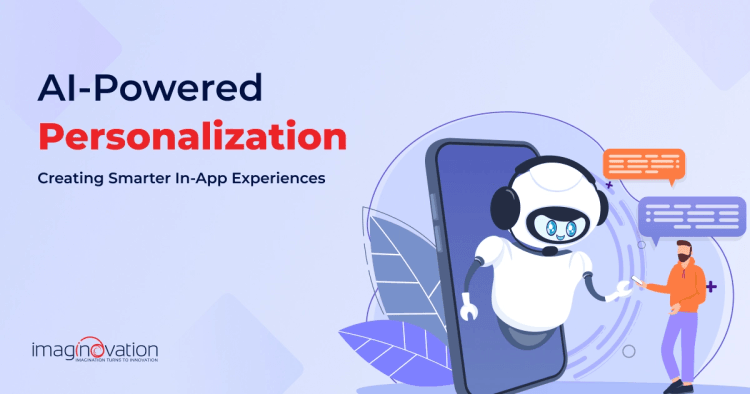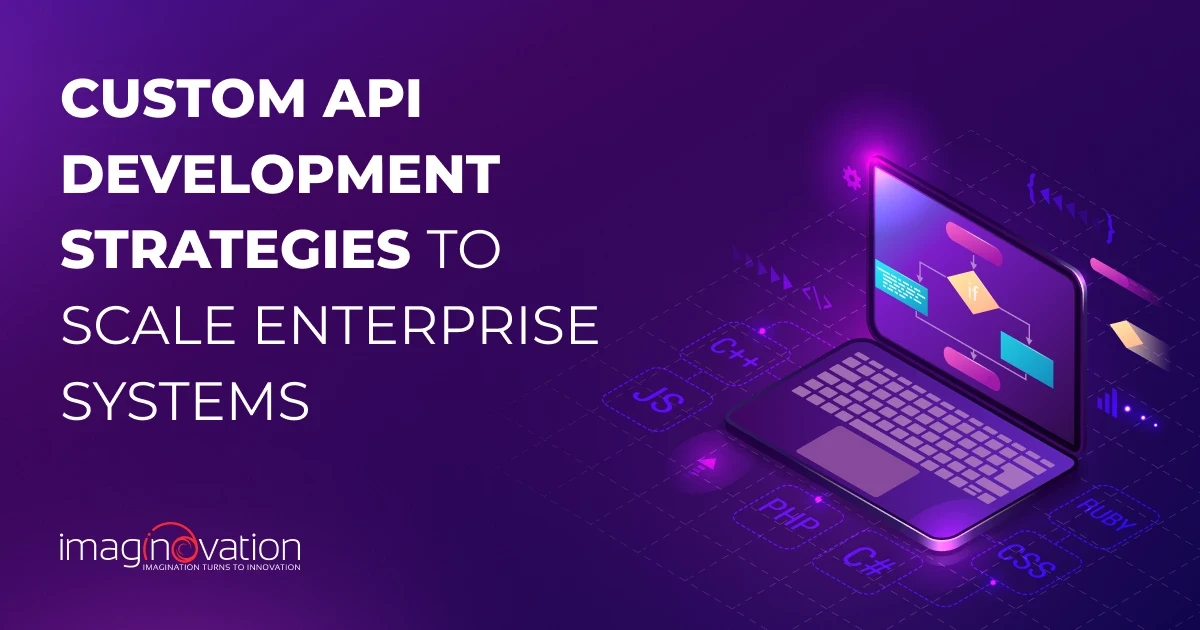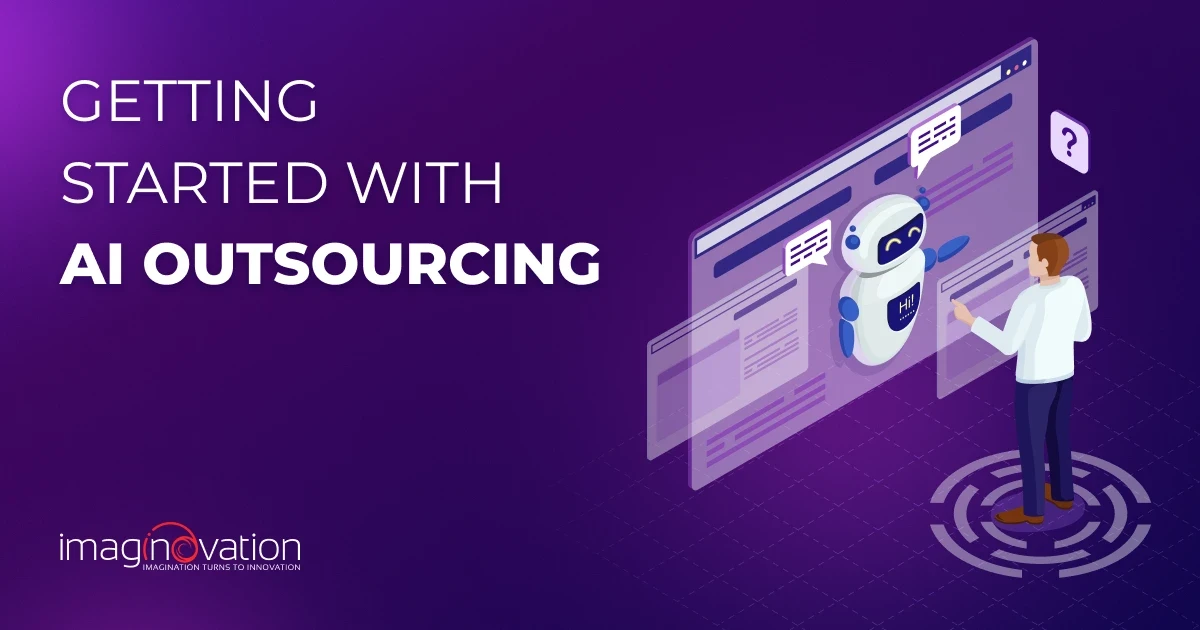I’ve seen too many apps fail because they try to treat every user the same. You’ve probably felt it yourself.
Your app works in theory, but users still drift away. The onboarding feels the same for everyone. The feed looks flat. Notifications don’t land because they don’t reflect what people actually want. And when users don’t feel seen, they leave fast.
AI-powered personalization changes that. Instead of a one-size-fits-all experience, your app adapts in real time to each user, anticipating needs, tailoring content, and surfacing the next best action before they even ask.
And it’s not just a “nice to have” feature. Research shows personalization can drive a 10–15% lift in revenue, making it one of the clearest paths to engagement and growth.
So how do you implement it?
Let’s walk through what AI personalization really means, the building blocks you need, and the practical steps to bring it to life.
What Does AI Personalization in Apps Mean?
Personalization isn’t new in apps. Most of us have seen the rule-based version: “If a user clicks X, show Y.” It works at a basic level but quickly feels rigid and predictable.
AI-powered personalization does not rely on static rules.
It learns from patterns in real user behavior, like clicks, session timing, purchases, and even hesitation points. With that context, the system can predict intent, adapt content, and surface the right experience in real time.
That’s the difference between showing a pre-set message and serving up the exact product, playlist, or workflow a user is most likely to engage with next. It’s dynamic, evolving, and scalable across thousands or millions of users at once.
In practice, AI personalization means:
- Recommendations that improve as behavior changes, not weeks later.
- Notifications triggered by predicted needs, not just past actions.
- Interfaces that adapt to feel unique to each user, not identical to everyone else.
For app leaders, this shift matters because static personalization maintains engagement, but AI personalization accelerates it, turning every interaction into a revenue opportunity.
Core Building Blocks of AI Personalization
Behind the tailored feeds, adaptive onboarding, and smart nudges are a set of core components working together.
Think of them as the foundation that makes personalization scalable, measurable, and actually useful for users.
Break down the technical foundation in business-friendly terms:
1. Data Collection & User Profiles
I always tell clients this: if your data isn’t clean and unified, your personalization efforts will fail before they even start.
That’s why the foundation of AI-powered personalization is a well-structured user profile. It’s not enough to track clicks or sessions in isolation — you need a single, unified view that blends behavioral, contextual, and demographic data. Only then can your system anticipate what users want before they ask.
What goes into a strong profile:
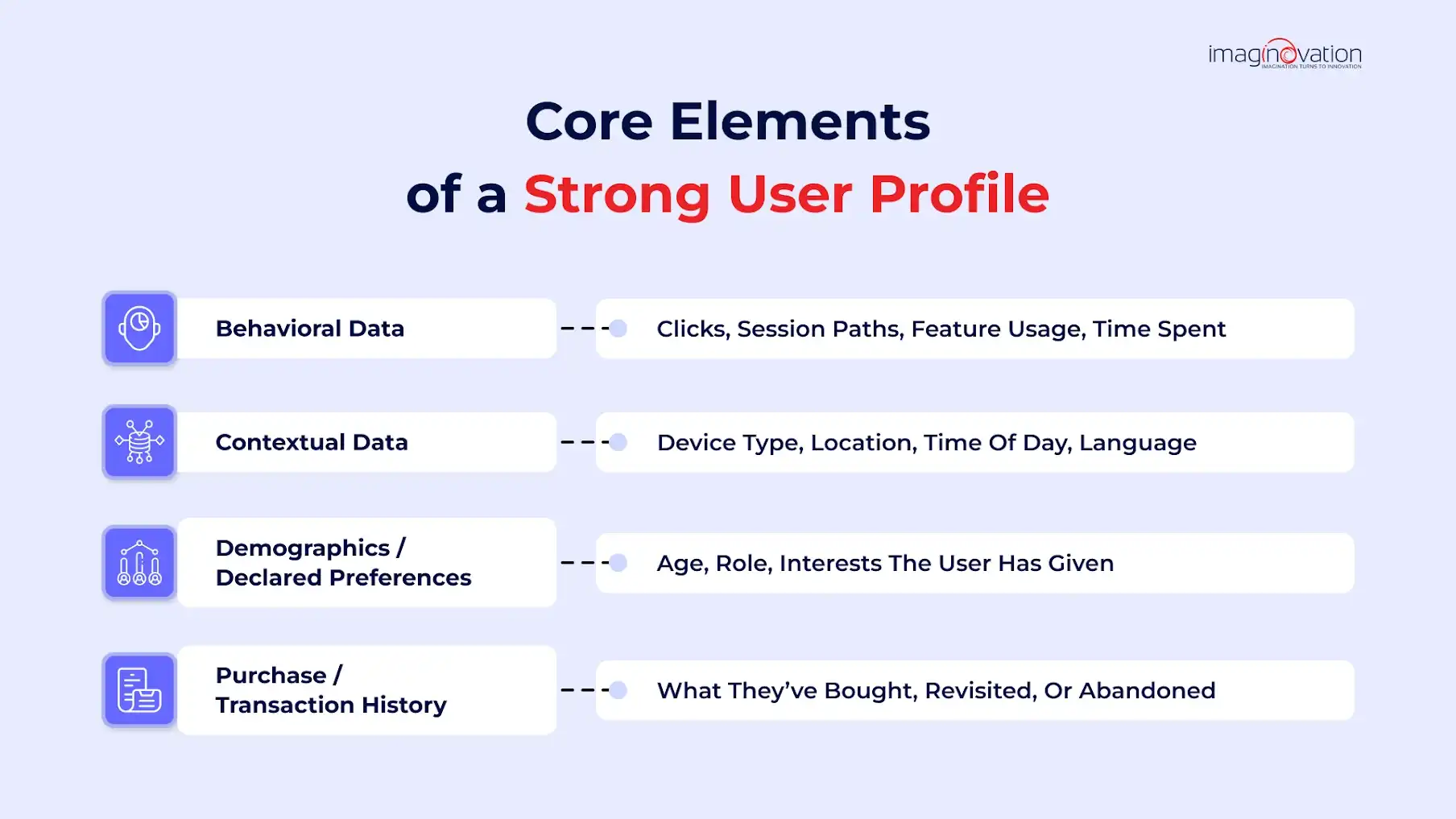
-
- Behavioral data: Clicks, session paths, feature usage, time spent
- Contextual data: Device type, location, time of day, language
- Demographics / declared preferences: Age, role, interests the user has given
- Purchase/transaction history: What they’ve bought, revisited, or abandoned
Once those fields are unified, the personalization engine has a live “reasoning base.” It’s not just “user did X” but “user behaves like group Y in situation Z,” enabling smarter content, offers, or flows.
News360, a personalized news app, builds an Interest Graph for each user. As the user reads, skips, and shares articles, the system analyzes their interactions and aggregates profile data to deliver a custom news feed that evolves over time.
Over time, the app doesn’t just show you news; it becomes your news feed, matching your changing preferences and context. That’s exactly how your app should work.
2. Machine Learning Models
Once you have clean user profiles, the real magic comes from machine learning. Models turn raw data into predictions, serving up the right experience at the right time.
Types of models often used in personalization:
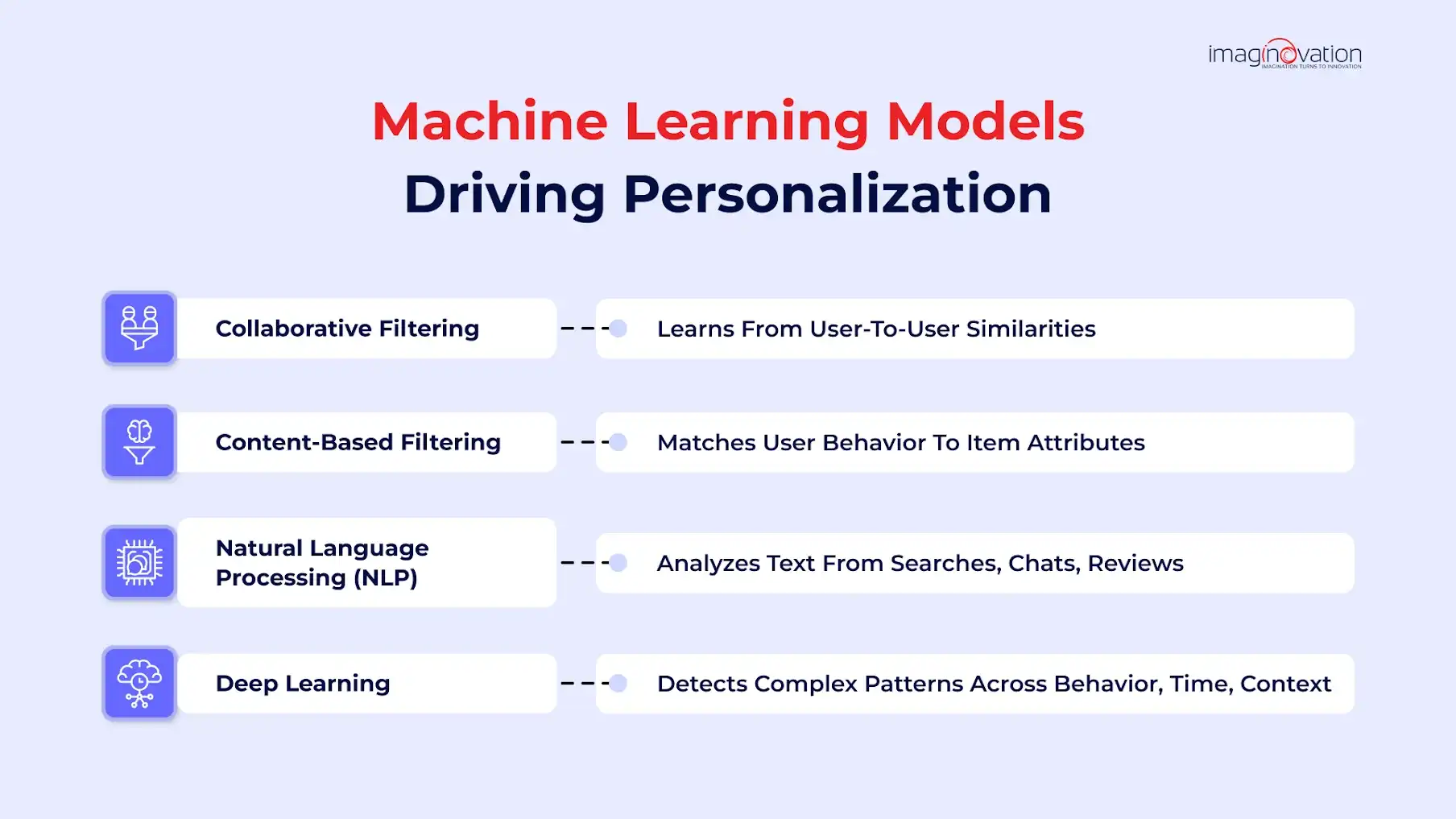
- Collaborative filtering: Learns from user-to-user similarities (“people like you also engaged with…”).
- Content-based filtering: Matches user behavior with item attributes (e.g., a user who listens to acoustic playlists gets more of them).
- Natural language processing (NLP): Analyzes text from searches, chats, or reviews to tailor recommendations.
- Deep learning: Looks at complex patterns across behavior, time, and context to predict next actions.
Spotify leans heavily on collaborative filtering and deep learning to power its Discover Weekly playlists.
Every Monday, the algorithm scans billions of listening sessions across its user base, finds overlaps with your habits, and then generates a unique 30-song list just for you.
Over 40 million people use it weekly, a testament to how sticky personalization becomes when powered by smart models.
These models are the engines behind features users come back for again and again, and they’re the difference between an app that feels generic and one that feels indispensable.
3. Real-Time Decision Engines
Personalization only works if it happens in the moment. Real-time decision engines connect user behavior with instant recommendations, adjusting the app experience on the go.
Instead of pre-set rules, these engines constantly analyze signals, like clicks, scrolls, location, and even time of day, and deliver the right nudge at the right second.
Take Amazon’s mobile app as an example. Its recommendation engine doesn’t just show “people also bought” items. It reacts dynamically to your browsing, purchase history, and current session data.
If you search for hiking boots, you’ll likely see socks, gear, or trail guides in the same session. This fast loop between action and recommendation is why Amazon converts casual browsing into purchases so effectively.
Here’s how real-time engines shift the experience compared to rule-based setups:
| Approach | Rule-Based Personalization | AI-Powered Real-Time Decisions |
|---|---|---|
| Logic | Pre-set “if/then” rules | Continuous machine learning |
| Speed | Updates in batches | Adapts instantly to behavior |
| Relevance | Generic and predictable | Contextual and dynamic |
| Scalability | Hard to maintain as users grow | Improves with more data |
This means an app that doesn’t just “personalize” once but evolves continuously, keeping users engaged in ways that feel effortless and natural.
4. Feedback Loops
Great personalization is a cycle. Feedback loops make sure your app learns and improves every time a user interacts with it.
Every click, skip, or purchase is a signal that feeds back into the system, sharpening recommendations and making future experiences smarter.
Take Duolingo as a strong example. Their AI doesn’t just hand out lessons; it watches how you respond—whether you pause, skip, make mistakes, or repeat exercises, and adjusts the next prompts accordingly.
Their “Explain My Answer” feature provides instant feedback on incorrect answers, teaching the user and refining the model simultaneously.
This is where long-term value kicks in. Without feedback loops, personalization goes stale. With them, apps adapt like living systems, more relevant, more engaging, and harder for users to walk away from.
How to Implement AI-Powered Personalization in Your App
Rolling out AI personalization doesn’t need to feel overwhelming. The smartest teams follow a structured approach: start small, prove the lift, and scale with confidence.
1. Define clear goals.
Are you trying to increase engagement, reduce churn, or nudge more users into premium tiers? Tie personalization to one or two measurable outcomes so you can prove ROI quickly.
Audit your data.
Personalization lives or dies by data quality. Make sure you have consistent event tracking, reliable user profiles, and the right consent practices in place. Think of this as preparing the soil before planting—you won’t get growth without it.
Choose the right approach
Pre-built AI APIs are fast to test but limited in scope, while custom models give you flexibility and differentiation at the cost of higher investment. Many teams start with APIs to validate value, then evolve toward custom solutions as their needs grow.
Integrate into the app experience
This could mean adaptive onboarding that skips irrelevant steps, behavior-based push notifications that respond to intent, or dynamic UI changes that surface the right features at the right time.
The key is to embed AI where it changes user behavior, not just where it’s easiest to bolt on.
Measure and Optimize
Don’t wait until after launch to think about metrics. Instrumentation upfront allows you to track retention, upgrades, session time, and conversions from day one. Use A/B testing and feedback loops to refine continuously, making personalization sharper with each cycle.
Real-World Use Cases of AI Personalization in Mobile Apps
Personalization is already driving results across industries. The strongest apps are the ones that feel like they “know” their users, adapting in ways that make every interaction faster, easier, or more relevant.
Here are some concrete examples of how AI personalization is shaping mobile experiences today:
- E-commerce apps: Personalized product recommendations based on browsing, purchase history, and even real-time context.
- Media and streaming apps: Tailored playlists, watchlists, or content feeds that evolve with user preferences.
- Healthcare and wellness apps: Adaptive care plans, personalized nudges, or customized routines that respond to progress and behavior.
- Fintech apps: Spending insights and tailored financial advice delivered in real time, helping users make smarter money decisions.
These use cases all point to the same outcome: when users feel like an app adapts to them, they engage more often, stay longer, and are more likely to pay for premium access.
Beyond Personalization: AI + AR/VR for Immersive In-App Experiences
Personalization doesn’t stop at content feeds or push notifications.
The next frontier is immersive experiences, where AI blends with AR, VR, and conversational interfaces to make apps feel alive and responsive.
- AI + AR: Retail and fashion apps are already offering virtual try-ons that adapt to individual preferences, helping users see how clothes, furniture, or makeup will look before they buy.
- AI + VR: In learning or training apps, VR experiences can adjust in real time to a user’s pace and behavior, creating an adaptive environment that feels tailored rather than generic.
- AI + Voice/Conversational UI: Apps can now adapt tone, responses, and recommendations dynamically, making interactions feel more natural and human.
AI can literally build a unique GUI per user. Imagine every person opening your app and seeing a completely different interface designed around their goals. That’s where personalization is headed.
For product leaders, this is a glimpse of what’s around the corner. As AR glasses, VR platforms, and conversational AI become mainstream, the apps that can fuse these with personalization will leapfrog the competition in engagement, retention, and revenue.
Challenges & Pitfalls to Watch Out For
AI-powered personalization offers huge potential, but it’s not without risks. The biggest mistake I see is treating personalization as a plug-and-play feature. If it doesn’t integrate seamlessly with your product and your brand, it will feel bolted on, and users notice that right away. Personalization only works when it feels natural, not forced.
Leaders need to anticipate common pitfalls early so they don’t undermine trust, scalability, or long-term success.
1. Data Privacy & Compliance
Personalization depends on data, but mishandling it can erode user trust instantly. Regulations like GDPR and CCPA require strict consent, storage, and usage protocols. Cutting corners here can mean fines and reputational damage.
2. Over-Personalization
There’s a fine line between helpful and invasive. Push too far with hyper-targeted recommendations or notifications, and users may find the experience “creepy” rather than convenient. Balance is critical.
3. Scalability
What works for 1,000 users may fail for 1 million. Personalization engines need infrastructure that scales smoothly, maintaining speed and accuracy as the app grows.
4. Vendor vs. In-House
Off-the-shelf tools promise speed but often lack the depth needed for unique brand experiences. Building in-house requires expertise and resources. Leaders must weigh speed-to-market against long-term flexibility before committing.
Selecting the Right Partner for AI Personalization
Choosing the right partner determines whether your personalization strategy drives real ROI or stalls at surface-level engagement. Most off-the-shelf SaaS personalization tools sound promising, but often fall short. They can’t adapt deeply enough to your unique brand, workflows, and customer expectations.
When evaluating a vendor, look for:
- Proven AI/ML expertise – teams with experience building and deploying machine learning models in production, not just demos.
- Mobile app development experience – because great personalization is only as strong as its integration into your app.
- Ability to integrate with existing systems – personalization should pull from your CRM, analytics, and user databases, not create new silos.
- Long-term support and iteration – AI needs ongoing tuning; your partner should help refine strategies as your user base grows.
Conclusion
AI personalization is all about long-term engagement and revenue growth. Apps that adapt in real time to each user don’t just feel smarter; they build loyalty that lasts.
The opportunity is clear: start with defined goals, align AI with your app’s unique data, and choose a partner who can deliver custom solutions that scale.
At Imaginovation, we help companies like yours move beyond generic tools and into truly personalized mobile experiences that drive measurable growth. Ready to see how AI can transform your app?
Ready to build an app, but not sure where to start?
We've got you covered. Click the button below to get started.

